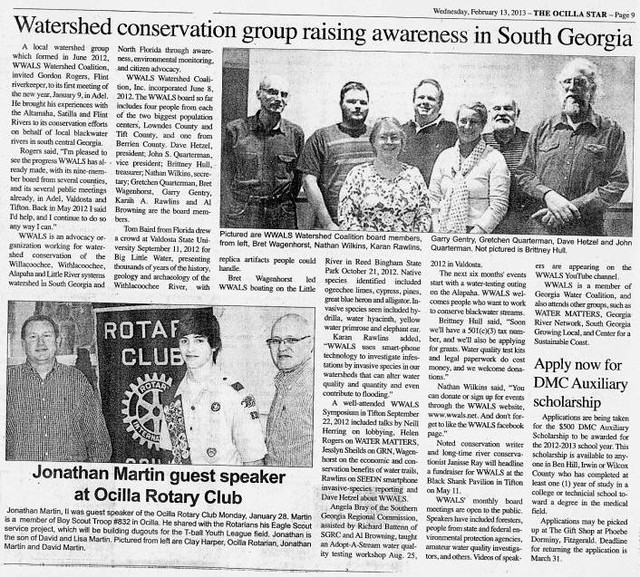Monthly Archives: February 2013
Big Little River Paddle Race
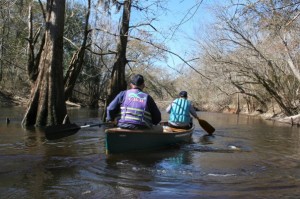 Thanks to the hard work and dedication of Bret Wagenhorst, WWALS Watershed Coalition will be hosting the first Big Little River Paddle Race on Saturday March 23rd at 10am. The goal for the days event will be to have fun, enjoy the natural beauty of our watershed, and to hopefully raise funds for watershed conservation and preservation. The paddle race will be held on a three mile course, where we will float upon the tannin stained waterways, and pass both indigenous as well as invasive species. For anyone who has not previously paddled the Little River, we hope you will enjoy yourselves, and hopefully make use of this resource more frequently. For the experienced paddler, good luck and enjoy the journey.
Thanks to the hard work and dedication of Bret Wagenhorst, WWALS Watershed Coalition will be hosting the first Big Little River Paddle Race on Saturday March 23rd at 10am. The goal for the days event will be to have fun, enjoy the natural beauty of our watershed, and to hopefully raise funds for watershed conservation and preservation. The paddle race will be held on a three mile course, where we will float upon the tannin stained waterways, and pass both indigenous as well as invasive species. For anyone who has not previously paddled the Little River, we hope you will enjoy yourselves, and hopefully make use of this resource more frequently. For the experienced paddler, good luck and enjoy the journey.
Registration costs $20 per boat in advance through 20 March 2013. Event day sign-in will be from 8:30 to 9:30am; registration at the event costs $30 per boat.
Flyer with details: PDF
First Annual
Big LITTLE RIVER Paddle Race
Saturday, March 23, 2013
Proceeds to benefit Friends of Reed Bingham and WWALS Watershed Coalition
Continue readingLead, arsenic, and uranium in water causing cancer –Janet McMahan
 Uranium? Yes, really: it comes out of granite rocks up deep water wells
in the Georgia Piedmont.
The other metals arsenic come from human energy,
industrial, and agricultural activities,
ranging from fenceposts to Plant Scherer,
dirtiest coal plant in the country, emitting mercury, some of which ends
up in the Alapaha River.
Here’s
video of Janet McMahan speaking about this:
Uranium? Yes, really: it comes out of granite rocks up deep water wells
in the Georgia Piedmont.
The other metals arsenic come from human energy,
industrial, and agricultural activities,
ranging from fenceposts to Plant Scherer,
dirtiest coal plant in the country, emitting mercury, some of which ends
up in the Alapaha River.
Here’s
video of Janet McMahan speaking about this:
Janet McMahan spoke to the group after the
Adopt-A-Stream water quality testing training
taught by Angela Bray and Richard Batten.
Video by Gretchen Quarterman for WWALS Watershed Coalition (WWALS),
Valdosta, Lowndes County, Georgia, 5 August 2012
Janet McMahan adds:
Continue readingAlapaha River Park?
Update 2019-11-12: This is happening, as Naylor Boat Ramp.
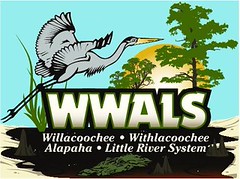 WWALS Watershed Coalition
WWALS Watershed Coalition
FOR IMMEDIATE RELEASE
Alapaha River Park?
Adel, GA, 18 February 2013 — WWALS Watershed Coalition opposes closing Old State Road to Hotchkiss Landing at the Alapaha River, and proposes Lowndes County instead increase access and conservation of the Alapaha River by creating a park, which will also boost the regional economy.
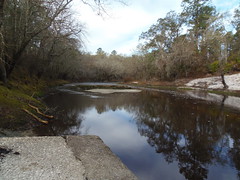 The Lowndes County Commission will vote Tuesday February 26th on
closing the only public access to the Alapaha River in that county.
A regional watershed group, WWALS Watershed Coalition, suggests
instead that the county purchase land along the Alapaha to create a
county park with a boat ramp and trails to match the ones on the
Withlacoochee River in Langdale Park.
The Lowndes County Commission will vote Tuesday February 26th on
closing the only public access to the Alapaha River in that county.
A regional watershed group, WWALS Watershed Coalition, suggests
instead that the county purchase land along the Alapaha to create a
county park with a boat ramp and trails to match the ones on the
Withlacoochee River in Langdale Park.
“A park would simplify maintaining the 100 foot natural vegetative buffer required by the state in a Protected River Corridor,” said Dave Hetzel, WWALS President. “It could even reduce potential liability to the county from Continue reading
WWALS outing called because of weather, but….
Gretchen posted:
The “official” event is off because of the weather. However, if you
want to see the location, gather at Gary Rampley’s, past Mullins Lane at 6974 Old State Road and park in his yard and then walk to the River (less than .2 miles) at 1:00. Meet others who like a cold, rainy outing.
Or, at 2:00pm meet at Let’s Eat Cafe (Exit 18 from I75—across from Austin’s Steak House at the Shell Station) to discuss strategies for keeping access to the Alapaha River in Lowndes County.
Our local hosts still want to meet up with interested folks and for those not up to braving the weather, we will be indoors at Let’s Eat (an excellent local place to meet and eat).
WWALS in the Ocilla Star, 2013-02-13
WWALS in the Ocilla Star Wednesday 13 February 2013, scan by Cindy Leighton:
This is from the WWALS press release of 10 January 2013 that also appeared in Tifton Gazette 18 January 2013.
WWALS asks that Old State Road be kept open to the Alapaha River in Lowndes County
Letter from WWALS to Lowndes County Commission, signed Friday, mailed Saturday; the hearing is 5:30 PM today 12 February 2013, 327 North Ashley Street 2nd floor, Valdosta, GA.
Lowndes County Board of CommissionersContinue reading
327 North Ashley Street
Valdosta, GA 31601
WWALS Watershed Coalition
www.wwals.net
Dear Lowndes County Commissioners,
Rules for river corridor protection –GA EPD
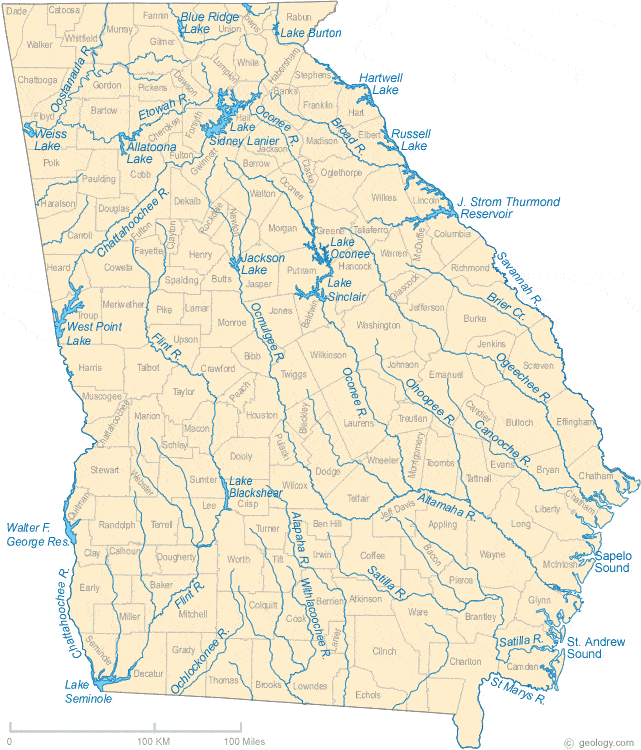 So
Georgia state law requires protection for perennial river corridors
and
the major rivers in the WWALS watersheds qualify as perennial rivers.
What are the rules?
Apparently to be a “Qualified Local Government” a comprehensive plan
including River Corridor Protection Plans with
protection for a natural vegetative buffer area
bordering each protected river is required.
So
Georgia state law requires protection for perennial river corridors
and
the major rivers in the WWALS watersheds qualify as perennial rivers.
What are the rules?
Apparently to be a “Qualified Local Government” a comprehensive plan
including River Corridor Protection Plans with
protection for a natural vegetative buffer area
bordering each protected river is required.
Rules of Georgia Department of Natural Resources,
Environmental Protection Division
Chapter 391-3-16
Rules for Environmental Planning Criteria
391-3-16-.04 Criteria for River Corridor Protection
Continue reading
(1)(b) The Comprehensive Georgia Planning Act of 1989 provides for the development of coordinated and comprehensive planning by municipal and county governments. Such comprehensive plans shall consider the natural resources, environments, and vital areas within the jurisdiction of the local government. Maintenance of the status as a “Qualified Local Government” is contingent upon the development of such comprehensive plans (O.C.G.A. 50-8-1 et seq.).
What does perennial mean?
What does “perennial” mean in Georgia Mountain and River Corridor Protection Act, O.C.G.A. 12-2-8 (2010)?
According to Merriam-Webster:
Definition of PERENNIAL
1: present at all seasons of the year
 For example, does the Alapaha River at Hotchkiss Landing
often (if ever) go dry?
No, there is pretty much always water there.
For example, does the Alapaha River at Hotchkiss Landing
often (if ever) go dry?
No, there is pretty much always water there.
That Georgia state law, O.C.G.A. 12-2-8 (2010), has a more specific definition:
Continue readingPerennial river corridors shall be protected –GA state law
Georgia state law requires local governments to protect a natural vegetative buffer 100 feet on each side of the stream banks of every perennial river corridor. The wording is “shall” as in “shall be protected”.
Continue readingGeorgia Mountain and River Corridor Protection Act, O.C.G.A. 12-2-8 (2010)
12-2-8. Promulgation of minimum standards and procedures for protection of natural resources, environment, and vital areas of state; stream and reservoir buffers
(g) The department shall, by January 1, 1992, promulgate the minimum standards and procedures for protection of river corridors referred to in subsection (b) of this Code section including, but not limited to, regulated activities within river corridor areas. In promulgating such standards, the department may classify river corridor areas and activities by type, size, and other factors relevant to the advancement of the policies and purposes of this Code section. Such standards shall include, but are not limited to, the following:
(1) Perennial river corridors shall be protected by the following criteria:

